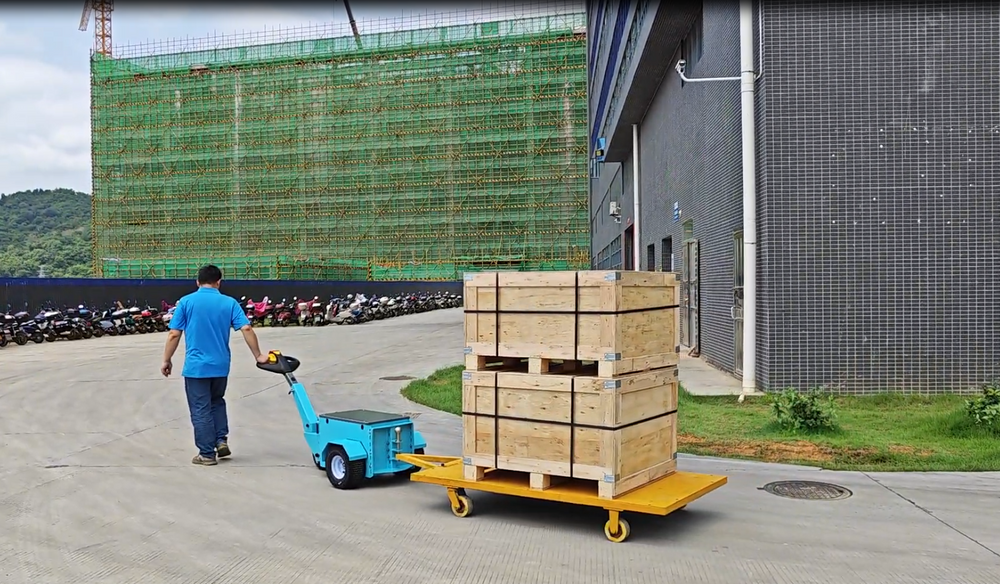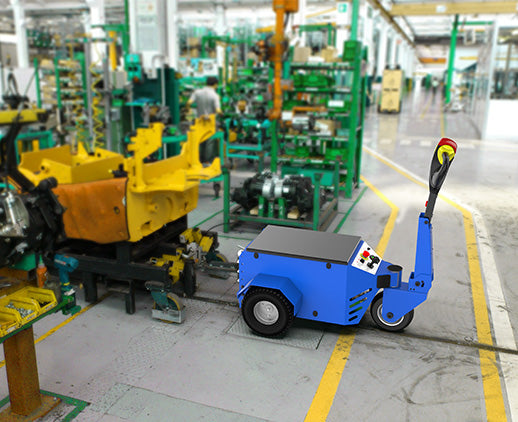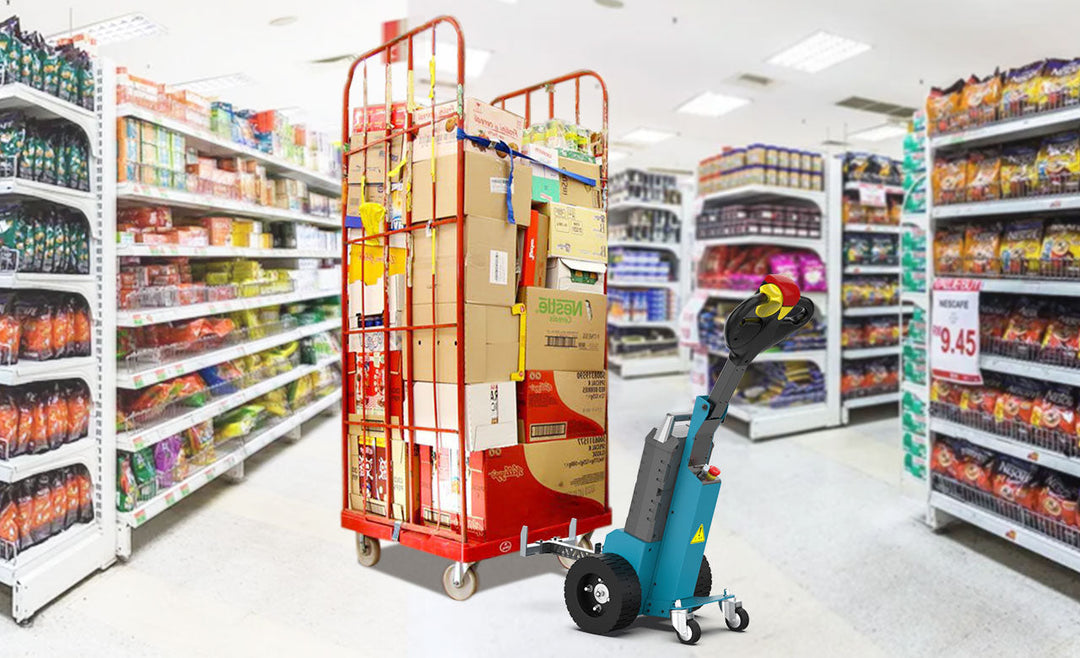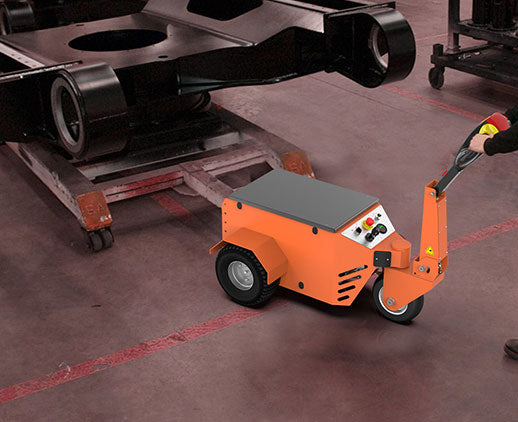Which is better? Comparing electric and manual tugger machines in one article
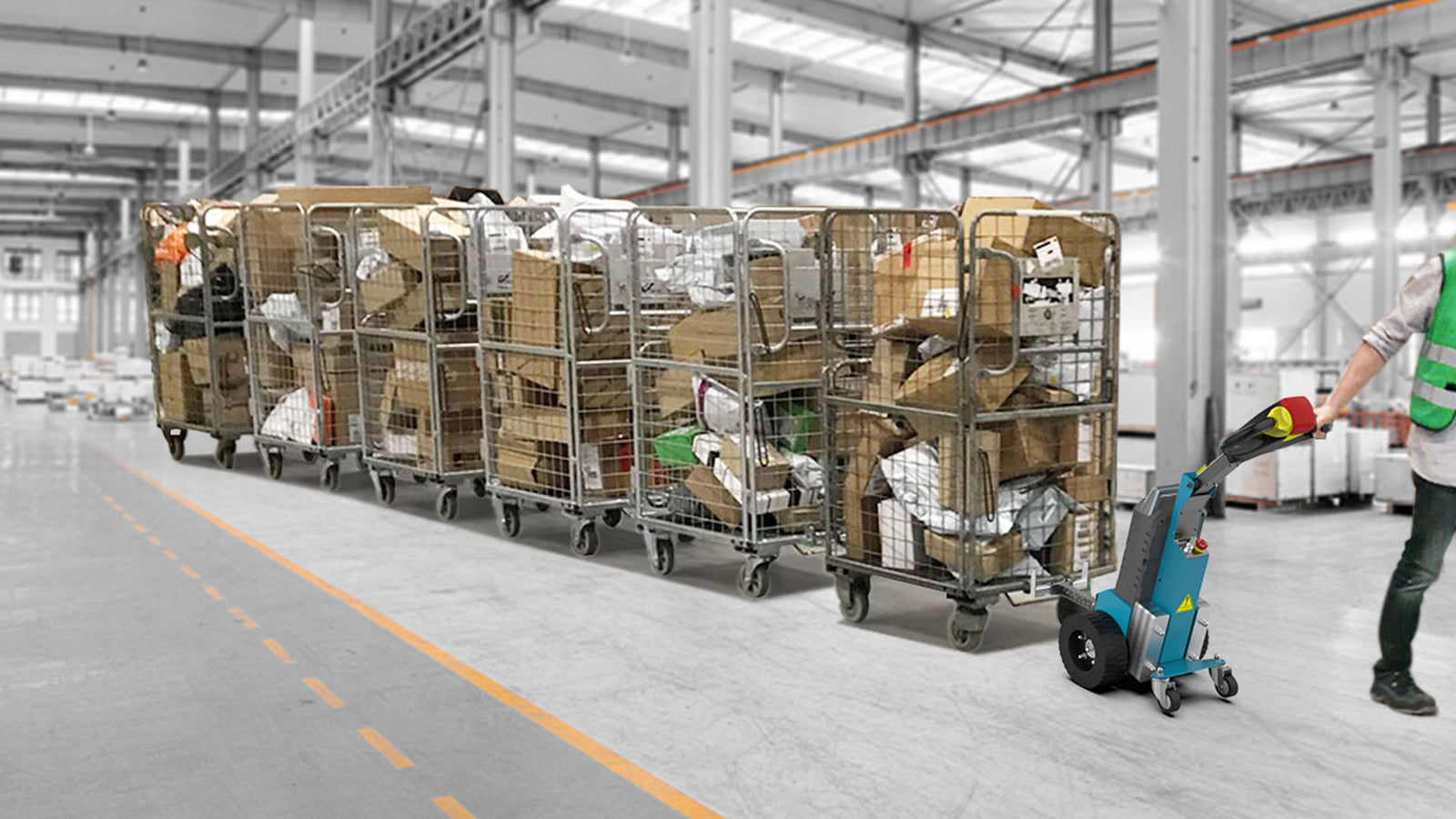
Before discussing which is better, electric or manual tuggers, we first need to understand what they are, what the main differences are, and what the criteria are for our comparison. Although electric tuggers always have greater advantages in most cases because they have stable power, no emissions, and run quietly, sometimes manual tuggers have more advantages than electric tuggers because they are flexible and have a low initial cost. In addition, there is also a tugger equipped with fuel, but its pollution and noise are more serious and the cost is higher. Here we only compare electric tuggers and manual tuggers.
What Are Electric and Manual Tugger Machines
Electric Tugger Machines
An electric tugger is a load handling machine that runs on electricity and slides or moves heavy objects. It was designed to replace manual labor tuggers and the new electric form can work with materials that are heavier than its predecessor. An electric tugger is typically wear-resistant steel and can handle loads of several tons. Due to its high load capacity, the electric tugger is best suited for high-load warehouses, factories, and distribution centers.
The electric tugger works by means of electrical energy being turned into mechanical movement for the load to go through when being transported. An on-board high-capacity lithium battery starts the electric tugger and provides 8 hours of power and reliable work. The control interface contains a speed controller, a direction lever, and a safety switch to be an easy and handy control for the operator.
Manual Tugger Machines
 Manual tuggers are machines that leverage human power and mechanical levers to move loads horizontally or stack them to add vertical space. A manual tugger is used for small-scale operations or in places where electricity is unavailable. The picture provided is a manual tugger made of several small flatbed trucks.However, manual tuggers are not suitable for many connections since they are hard to operate.
Manual tuggers are machines that leverage human power and mechanical levers to move loads horizontally or stack them to add vertical space. A manual tugger is used for small-scale operations or in places where electricity is unavailable. The picture provided is a manual tugger made of several small flatbed trucks.However, manual tuggers are not suitable for many connections since they are hard to operate.
In addition, manual tuggers are pulled using ergonomic push-pull handles, run smoothly thanks to the heavy-duty wheels, and are lightweight, yet strong due to the aluminum or steel frame. Some manual tuggers are equipped with pulleys or gears to multiply the user’s force. Such a small tugger machine can handle up to 1,500 pounds of materials and is widely used in small workshops for its simplicity and affordability.
Key Differences
Power and Performance

Electric tractors are more durable than manual tractors. The former use more powerful motors and larger batteries. For example, tractors using 48V batteries can continuously hold loads of more than 2,200 pounds. Not only can they maintain a higher stable speed, but they can also decelerate to operate more smoothly and more precisely. Therefore, we should use such equipment when we need to operate more accurately and safely in our business.
Manual tractors are considered to operate based on human power with minimal mechanical support, so they can only operate at a load of 1,500 pounds. In the most common and heaviest applications, their loads are much lower than electric tractors. Although they may have a leading advantage due to their relatively low purchase price and flexibility, this cannot change the fact that electric tractors are more powerful and have higher loads than manual tractors.
Environmental Impact
Electric tuggers are relatively environmentally friendly because they do not produce any gas when working. Moreover, the noise level of the motor used in the electric tuggers usually is less than 65 decibels, which is low, and easy to keep a good working environment.
Manual tuggers are free from fuel or battery pollution, so they are relatively environmental friendly. Nevertheless, manual tuggers are quite noisy, which willo have some effects on the surrounding working environment, especially for the operators who are working. Both types of tuggers are relatively environmental friendly, however, the effect of noise reduction of the manual tuggers is much worse than that of the electric tractor.
Operational Costs
Electric tuggers may have higher upfront costs, but they can provide significant savings in the long run. Additionally, the efficient energy use and lower maintenance requirements of electric tuggers contribute to overall cost savings. Over the life of the machine, businesses can save up to 30% in operating costs compared to manual tuggers.
The lower initial cost of manual tuggers makes them an attractive option for smaller businesses or those with limited budgets. However, ongoing costs, such as potential physical strain on workers and slower operating times, can add up. Lack of automation means higher labor costs and potential reductions in productivity over time.
Maintenance Requirements

Electric tuggers require less maintenance. Generally speaking, electric tuggers have fewer moving parts that require regular inspection than manual tuggers. Maintenance usually includes checking the health of the battery and occasionally the motor. Most electric tractor manufacturers generally provide regular after-sales maintenance for electric tuggers, which means minimal downtime and continuous operation, ideal for reducing operating costs.
Manual tuggers require frequent mechanical inspections of components such as wheels, handles, and levers because they are manually operated and may be damaged during use, causing them to depreciate faster. This can lead to higher maintenance costs because certain components may need to be repaired more frequently, otherwise it will cause them to stop operating.
Criteria for choosing the right tractor
Load capacity
Load capacity is an essential criterion when choosing a tugger. In general, electric tuggers are capable of maneuvering heavy objects. For instance, an electric tugger that can transport loads of up to 22,000 pounds is suitable for large warehouse operations. It means that you can relocate large amounts of goods in a short period of time.
Along with it, manual tuggers are capable of carrying loads as well, but that amount is lower. In most cases, manual tuggers can handle loads of up to 1,500 pounds. For this reason, they can be used in small operations.
However, an important point is that load capacity is one of the aspects that should be taken into account.It implies that the specific requirements of the job will help you pick a machine for now. Hence, a mix of the two units might be a more viable solution.
Frequency of use

Electric tuggers are designed for high-frequency operations. Their durability and high-performance levels fit perfectly with this concept. If your operations are continuous or very frequent, you should strongly consider purchasing an electric tugger with a high-capacity battery. It can run for up to 8 hours on a single charge.
Manual tuggers are the best solution for low-frequency use, they are manually operated by manpower. Consider a manual tugger if your tasks are scattered and few. They do not require frequent use and are ideal for occasional transport situations.
Indoor vs. outdoor use
Electric tuggers are the best choice for indoor mobile equipment. Whether operators need to move goods around a warehouse or move processing machinery on a factory floor, the zero emissions and low noise levels (typically less than 65 decibels) of electric tuggers create a better working environment.
Manual tuggers can be used both indoors and outdoors. Because of their simple mechanical design, manual tuggers are more maneuverable on rough concrete surfaces or in gravel fields, but they are not as stable as electric tuggers.
Budget considerations

One of the most vital factors for consideration is budgetary implications. In this respect, it is important to note that electric tuggers require initial higher investment because of their high capacity batteries and more advanced technology. Nevertheless, it is stated the further savings can be roughly up to 30% for batteries and maintenance because of the electric tugger’s increased energy efficiency.
At the same time, manual tuggers are more affordable in terms of the initial purchase, but the costs of labor are expected to increase with time. Consequently, sometimes even productivity can be compromised by the need to work with manual tuggers in large operations. However, the issue can be critically important for relatively small business, so the level of dependence would be high.
Select wisely between an electric and manual tugger machine based on these criteria. Having in mind the balance concerning load capacity, frequency of usage, environment of operation, and your budget will help you choose the tugger machine that meets your needs on every level and enhances material handling performance.




